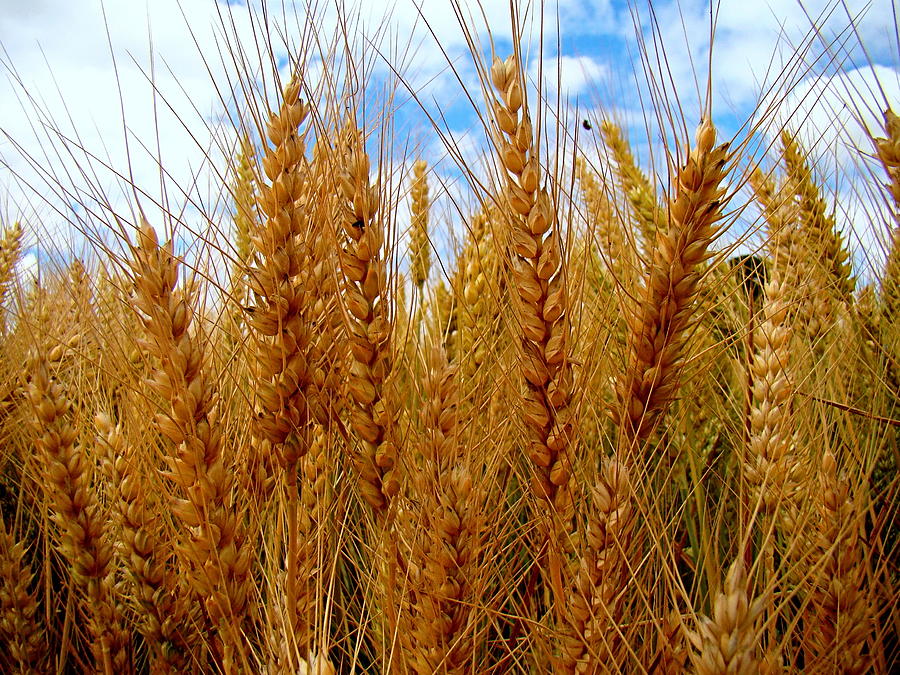As humans first started to settle down from nomadic
hunter-gatherers into early agricultural societies, they took what must have
been an exceedingly keen understanding of the diverse plants in their
environment and applied that knowledge to the cultivation of crops. Instead of
relying on the bounty provided by nature, these people began to select the most
appealing and nutritious plants to work deliberately. In so doing, they
actively produced brand new crops and developed an even deeper relationship
with the plant world.
And here, at the very dawn of civilization, early agriculturalists
took their growing understanding of plants, and perhaps a bit of serendipity,
and developed something to rival agriculture itself—beer. Agriculture and
brewing developed side-by-side because both required a deepening understanding
of the plant world. Today, the increasingly popular hobbies of home gardening
and homebrewing can bring us back to this early world thousands of years ago
where an appreciation for and knowledge of the plant world translated into
intoxicating, frothy, delicious brews.
This past Wednesday I was invited to give a presentation on
the intersection between gardening and homebrewing at the wonderful, new(ish)
Urban Chestnut bierhall in The Grove. I was invited by Gateway Greening, which
runs a monthly seminar series called, appropriately, Pints ‘N’ Plants. Around
fifty people came to learn and talk about the understanding of barley and hops
that is required to make great beer, and the many plants we can grow right here
in St. Louis to brew with.
 |
Bread baking and brewing happened under the same
roof in ancient Egypt. Photo by Keith Schengili-Roberts
|
Barley of course provides the essence of beer, the sugars
that yeast ferment into alcohol and carbon dioxide. But barley kernels straight
from the field are full of starch, a form of sugar inaccessible to yeast. To
unlock this sugar, maltsters control the germination of barley seeds, the
developmental program that converts starch into sugar for the young seedlings.
Instead of letting the seed continue to produce a whole new barley plant,
maltsters instead dry and roast the sweet malted barley to halt the process and
caramelize the sugars.
Fermented malted barley is all that is needed to make an
intoxicating beverage, but it will result in a cloyingly sweet, unpalatable
beer. Hops, the aromatic female flowers from the hop plant, perform the job of
balancing the saccharine barley with bitter hoppiness while flavoring the beer
as well. Hops took over from a diverse array of local herbs, fruits, and other
plants around a thousand years ago to become the exclusive flavoring of most
beer.
These earlier brews—called gruits—also relied on a strong sense of the qualities of local
flora to produce drinkable beer that would not poison the drinkers. Hops likely
superseded these hundreds or thousands of other plants because of their ability
to protect beer from bacterial infections so well, but they also make a damn
fine beer. The dozens of different varieties of hops lend distinct flavors and
aromas from dry and earthy to bright and citrusy, helping to recover the
diversity in flavorings lost with the gruits.
As any would-be usurper of the Busch crown will tell you,
beer only requires barley, hops, yeast, and water. However, the craft beer and
homebrewing renaissance has helped rediscover the variety of beer flavorings
that harken back to an earlier time when all manner of local plants found their
way into the brew kettle. Here, gardeners and homebrewers can join together in
search of homegrown, quality ale.
Any number of bizarre plants can find their way into
homebrewed beer. I covered just a handful to consider and get started in my
talk, some I have experience with and some I do not. By far the easiest to grow
is cilantro, the herb flavoring a lot of Mexican dishes. Instead of the leaves,
however, brewers seek the bright, citrusy seeds called coriander. They have a
completely different taste and are used in a very popular style of beer called
Belgian witbier. This is the style of Blue Moon and is a very refreshing beer brewed
with wheat, bitter orange peel, and coriander. In fact, the witbier is light on
hops and calls back to the gruits
that were flavored with an array of herbs and spices. Cilantro is so easy to
grow it will even reseed itself from year to year, reliably producing pods of
brown, crunchy seeds in the summer. Only about five tablespoons are required
with an equal weight of orange peel to flavor the beer, an amount easy to
acquire from just a plant or two.
I also covered how to grow and brew with pumpkin, chili
peppers(!), and potted citrus plants. Perhaps the best plant to get in the
ground this spring, however, is hops! A perennial, fast-growing vine, hops do
well in community spaces where they can spread out and grow stronger year-over-year,
or in the backyard of an enthusiastic gardener-brewer who has enough space for
a sturdy trellis. Each spring, homebrew supply stores sell chunks of hop
rhizomes, a root-like structure that overwinters to produce vines the next season.
This vegetative means of propagation ensures that gardeners get only the female
plants and clones of their favorite variety. After growing up to thirty feet
high and maturing at the end of summer, the hops are ready to be tossed in the
brew kettle for truly homegrown brewing.
 |
My former community garden, Block 1035. Hops growing
on the common space trellis in the background.
|
To combine gardening and brewing, with an eye for creativity
and variety, is truly to travel back in time to eras when most beer was brewed
at home alongside the baking of bread, and when a knowledge of local plants was
required for making delicious brews. For a time it seemed we had lost both of
these skillsets. But now with the ongoing popularity of home and community
gardening and the rapid rise in homebrewing, we all have the opportunity to
capture again that intrinsic link between the growing of plants and the brewing
of beer. Prost!
[I relied heavily on The Drunken Botanist by Amy Stewart and The Complete Joy of Homebrewing 3rd ed. by Charlie Papazian]


No comments:
Post a Comment